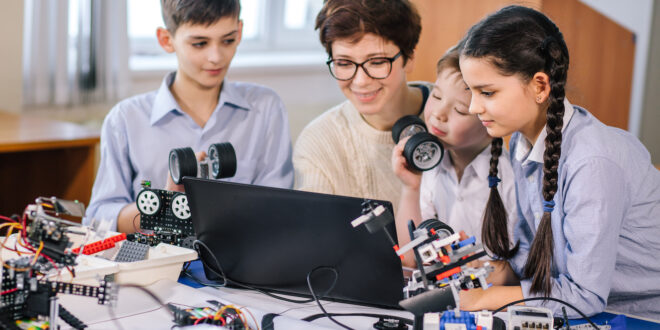In the world of education, STEM (Science, Technology, Engineering, and Mathematics) subjects have garnered considerable attention for their role in fostering innovation, critical thinking, and problem-solving skills. These fields form the backbone of many modern industries, driving advances in sectors ranging from healthcare to space exploration.
Yet, the traditional methods of teaching often involve dense textbooks and rote memorization, which can fail to capture the imagination and enthusiasm of students. Enter experiential learning: a paradigm shift that emphasizes ‘learning by doing.’ Through hands-on STEM projects, students are not just passive recipients of knowledge; they become active participants in the learning process.
What is Experiential Learning?
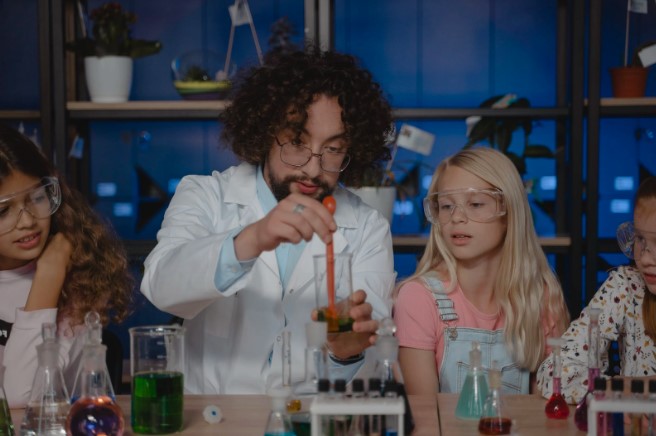
Experiential learning, at its core, is an educational approach that prioritizes direct experience as a primary method for acquiring knowledge. Instead of relying solely on passive methods such as reading or lecture-based learning, experiential learning immerses individuals in activities that require them to apply concepts in tangible situations.
This methodology is deeply rooted in the philosophy that people learn most effectively when they are actively involved in the learning process, allowing them to reflect on their experiences, understand the outcomes, and then use this understanding to engage in new experiences.
David A. Kolb, an educational theorist, further crystallized the concept of experiential learning with his Experiential Learning Cycle. This model posits that effective learning ensues through a cyclical process involving four stages:
- Concrete experience, where individuals encounter a new experience or reinterpret an old one;
- Reflective observation, where they reflect on the experience from multiple perspectives;
- Abstract conceptualization, where they develop new ideas or modify existing ones based on their reflections; and
- Active experimentation, where they apply these ideas to new situations.
This cycle emphasizes the continual interplay between theory and practice, emphasizing the value of ‘learning by doing’.
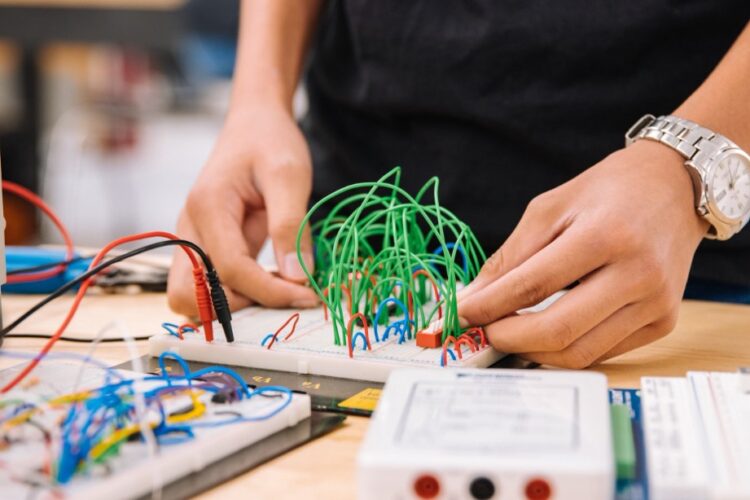
Benefits of Experiential STEM Projects
Experiential STEM projects bring a myriad of benefits to education, enhancing not only the absorption of core concepts but also the development of essential life skills. One of the most profound advantages is the heightened retention of information.
When students are actively involved in hands-on tasks, they’re more likely to remember and understand complex STEM concepts, transforming abstract theories into relatable, tangible experiences. This active engagement stimulates multiple senses, which in turn fortifies memory pathways and deepens comprehension. Such projects provide a practical platform for students to apply theoretical knowledge to real-world challenges.
Experiential STEM projects foster critical thinking, innovation, and problem-solving skills. As learners face challenges and uncertainties, they learn to think on their feet, adapt, and innovate, qualities that are indispensable in STEM professions. Furthermore, these projects often require collaboration, teaching students the value of teamwork, communication, and interdisciplinary cooperation. For any STEM teaching program aiming to prepare students for future careers and real-world challenges, integrating experiential projects is not just an enhancement; it’s a necessity.
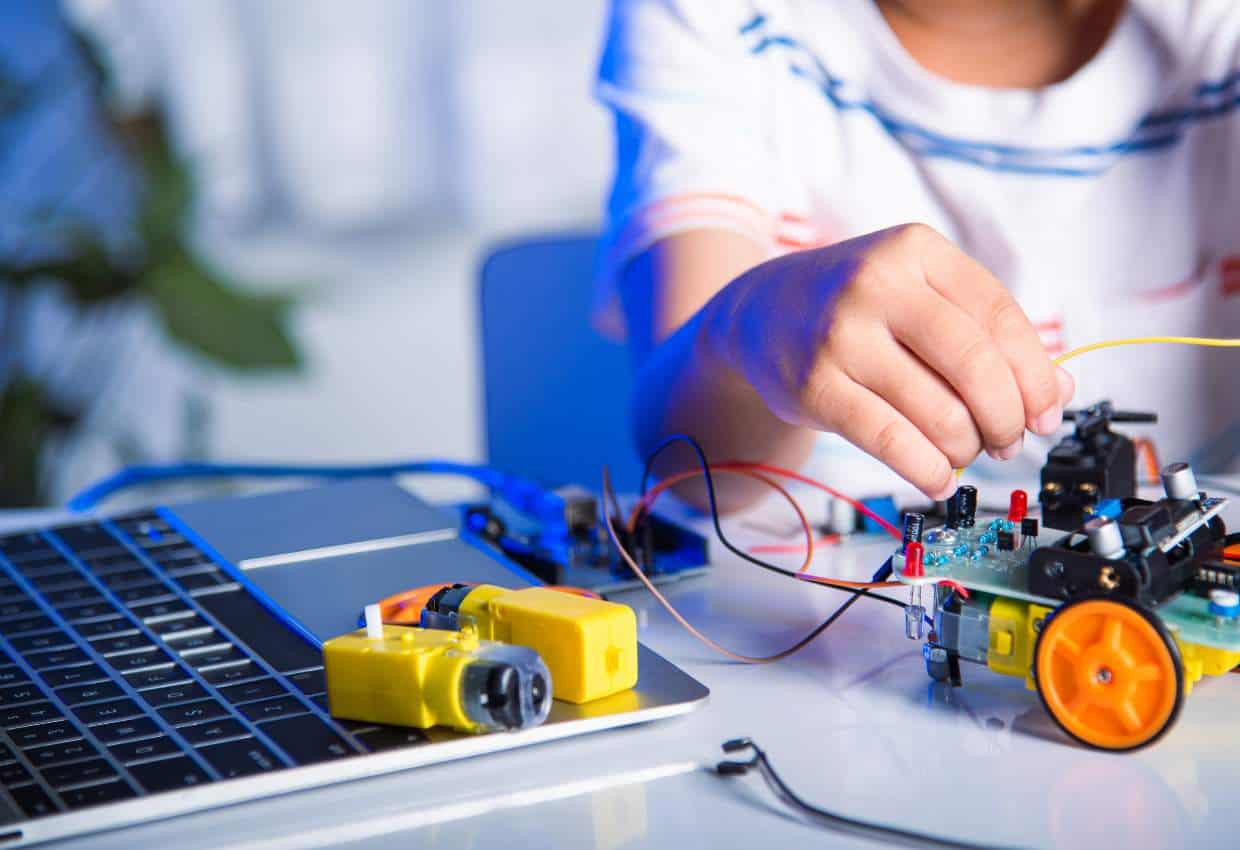
Integrating Experiential Projects in the Classroom
Incorporating experiential projects into the classroom requires strategy, adaptability, and resources. Educators must align these projects with the curriculum’s goals and objectives. This alignment ensures that the hands-on activities are not mere additions but integral components that enhance and complement the existing syllabus. Educators can begin by identifying key concepts or units where experiential learning might provide the most impact, and then brainstorm project ideas that would best illustrate or deepen understanding of those concepts.
Once a project is chosen, it’s vital to scaffold the experience, breaking it down into manageable steps and providing guidance and resources at each stage. This structure helps students approach the project with clear objectives and benchmarks, ensuring that the learning outcomes are achieved.
The classroom environment itself may need to be adapted to accommodate these projects. Traditional classroom setups might be reconfigured to facilitate group work, experimentation, or construction.
Providing the necessary tools, materials, and technology is essential, as is ensuring that safety protocols are in place, especially for projects that involve chemicals, machinery, or other potential hazards.
Beyond the physical environment, educators also play a role in fostering a mindset of curiosity, exploration, and resilience. They can do so by emphasizing the value of the learning process over the end result and by creating a supportive environment where mistakes are viewed as learning opportunities.
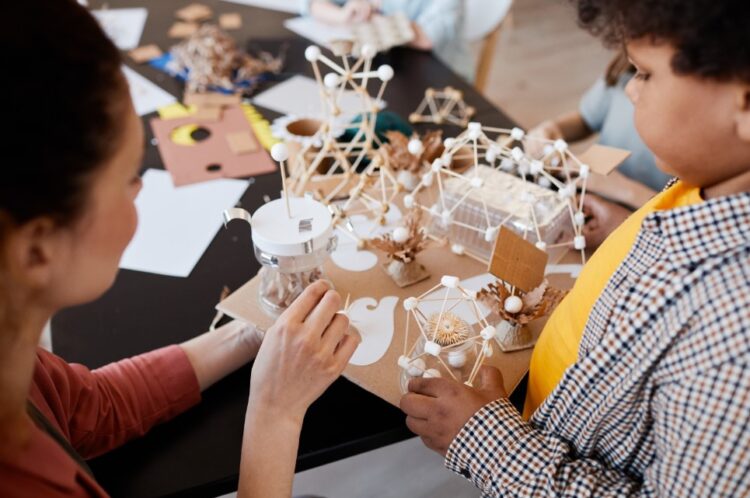
Examples of Experiential STEM Projects
There are countless projects that exemplify the principles of experiential learning, allowing students to explore hands-on, real-world applications of theoretical knowledge. One such project involves robotics, a multidisciplinary field combining engineering, programming, and design.
Students, starting with basic kits and moving to more complex models, can design, assemble, and program robots to perform specific tasks. Whether it’s navigating a maze, picking up objects, or even dancing to music, these robotics projects offer learners the opportunity to tangibly see the results of their coding and engineering efforts.
Another stellar example is found in renewable energy. Here, students can look into the construction of miniature wind turbines or solar panels. By designing these models, they not only grasp the principles of sustainable energy but also engage in experiments to measure the efficiency and output of their creations.
Beyond these, there are numerous other projects like hands-on chemistry experiments, where students observe and document reactions; engineering challenges, where they might design bridges or structures using specific materials; and even coding sessions, where they develop apps or games to address certain problems or needs.
Experiential STEM projects stand out as powerful tools for deepening understanding and fostering real-world skills. These hands-on endeavors not only enrich the learning experience but also prepare students for the challenges and innovations of tomorrow.
 Hi Boox Popular Magazine 2024
Hi Boox Popular Magazine 2024
